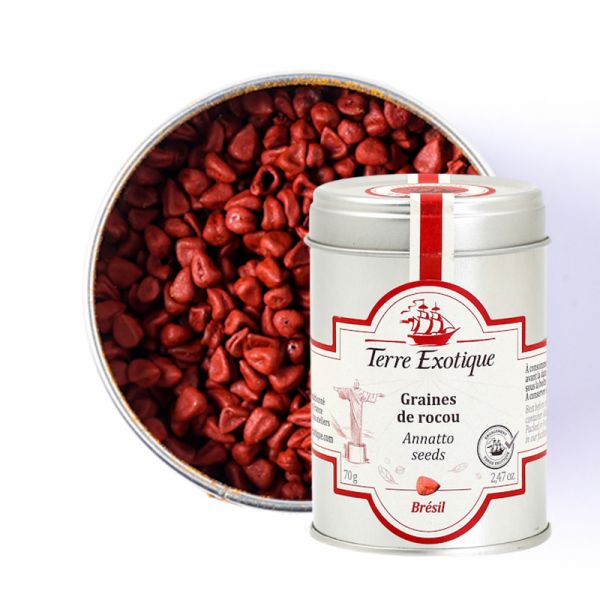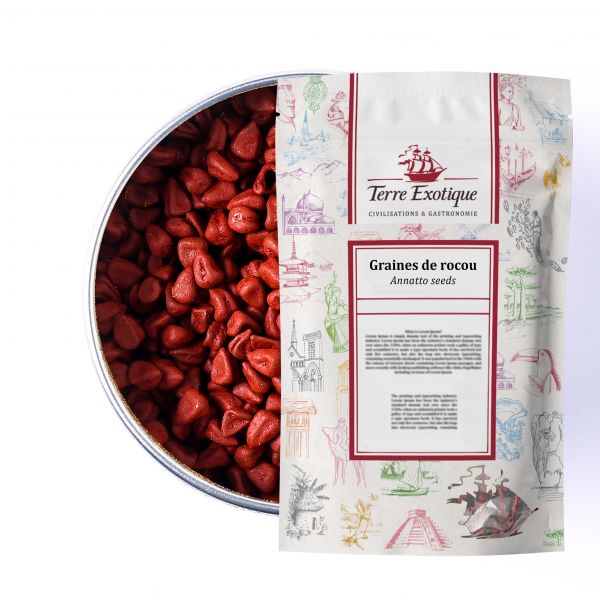



How to use annatto seeds in cooking?
Traditionally used in Asian and South American cuisines, annatto seeds will color your dishes in a lovely yellow-orange hue.
Some suggestions for using annatto seeds
Annatto seeds are mainly used to color food. They are commonly used in Mexican or Asian cuisine to add color to a sauce or a rice dish. They can also replace the color of paprika or saffron, however, the flavor will be different. However, annatto seeds have a very hard texture. It's best to use them in the form of butter and oil, or even in water. Indeed, the pigments naturally present in annatto seeds allow them to dissolve in water and oil. Thus, it will add a touch of color to rice, white meats, fish and seafood, broths, and vegetables.
Here are our tips for preparing annatto seeds: coarsely grind the annatto seeds using a mortar, gently heat the seeds in extra virgin olive oil, remove the seeds once the oil turns an orange color. Sear the food in the colored oil. Butter or water can be used instead of oil.
Discovering the flavors of annatto seeds
Annatto seeds color your plates with a beautiful orange hue. Its aromas being rather discreet, you can combine them with other spices such as cumin or turmeric to bring a more present flavor to your dishes.
Where do annatto seeds come from?
This red seed comes from the pod of the Bixa orellana, a tree native to Central America. After harvesting, annatto seeds are dried to remove the wax that covers the seed. It is this wax that allows annatto seeds to dissolve in water and oil to diffuse their pigments.
The origins of annatto seeds
This natural dye was used by the American Indians for its medicinal virtues, its coloring properties, against insect bites or for their body paintings. They also used it as a coloring agent for the lips, hence its nickname "lipstick tree." Did you know? Mimolette, edam, and cheddar owe their color to annatto seeds!
| Allergen | Absence |
|---|---|
| Native country | BRESIL |
| Genus and botanical species | Bixa orellana |
| Ingredients | annatto seed |
| TRACES EVENTUELLES D'ALLERGÈNES | céleri, sésame, moutarde, fruits à coques. |
 Français
Français 